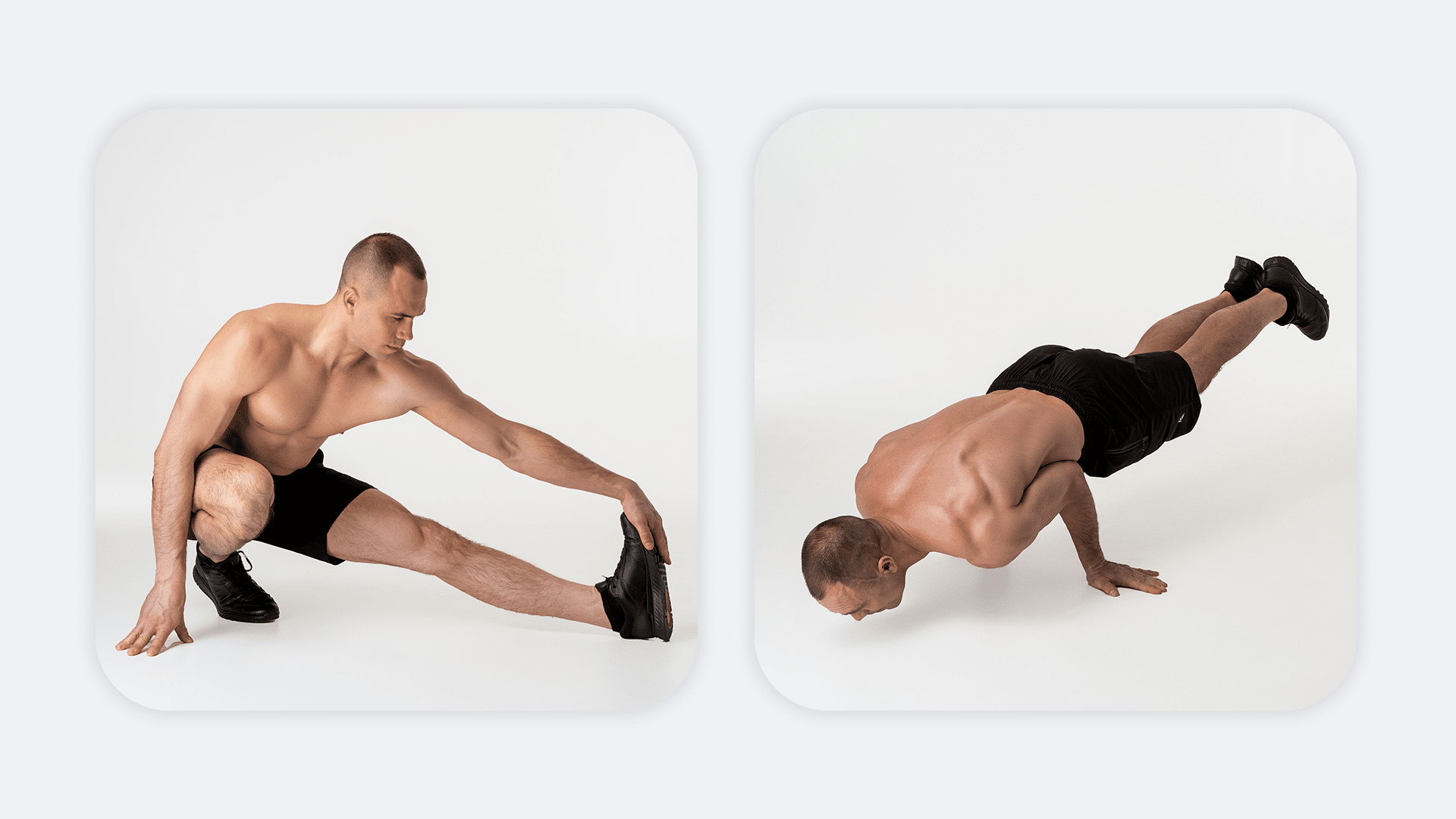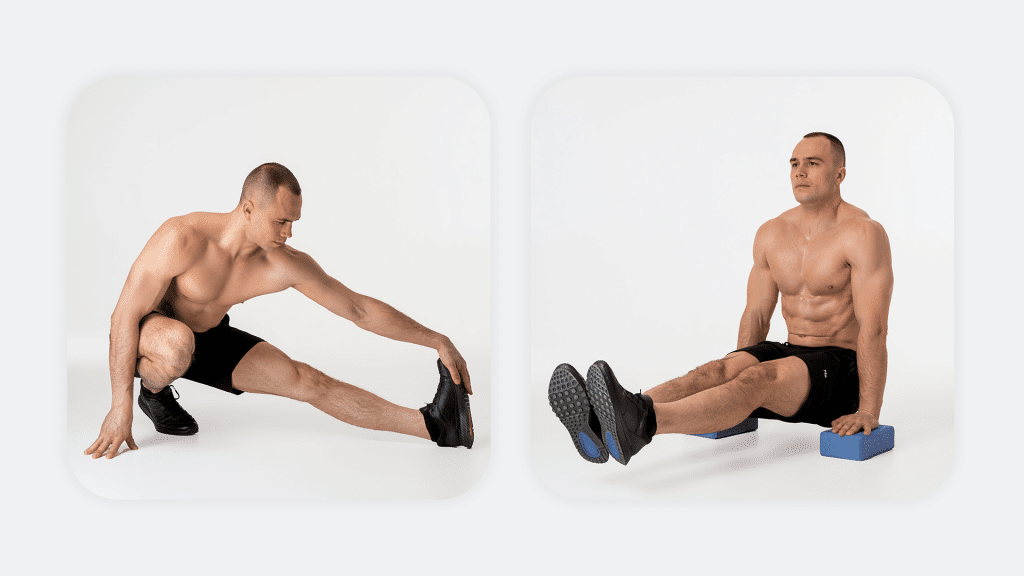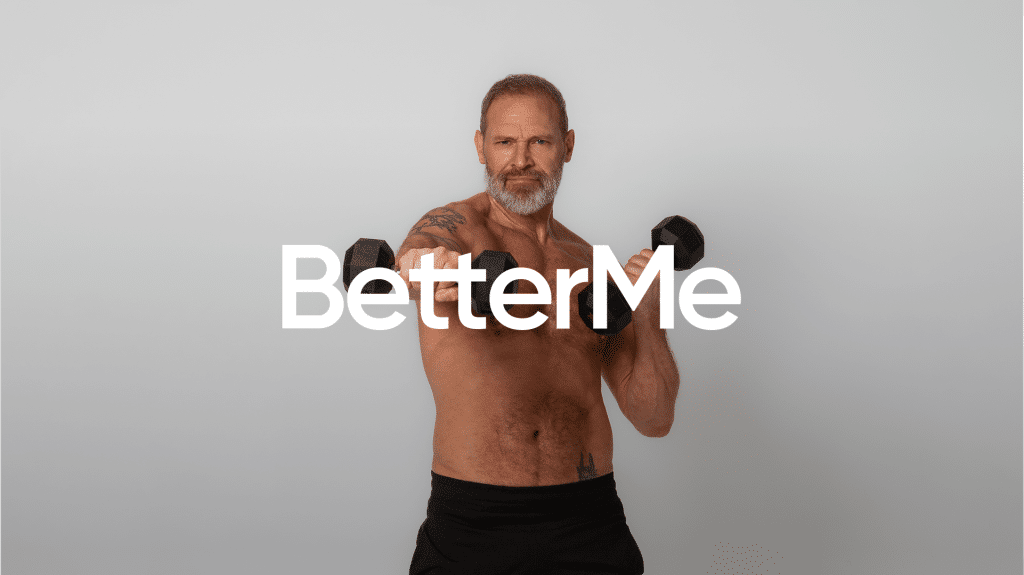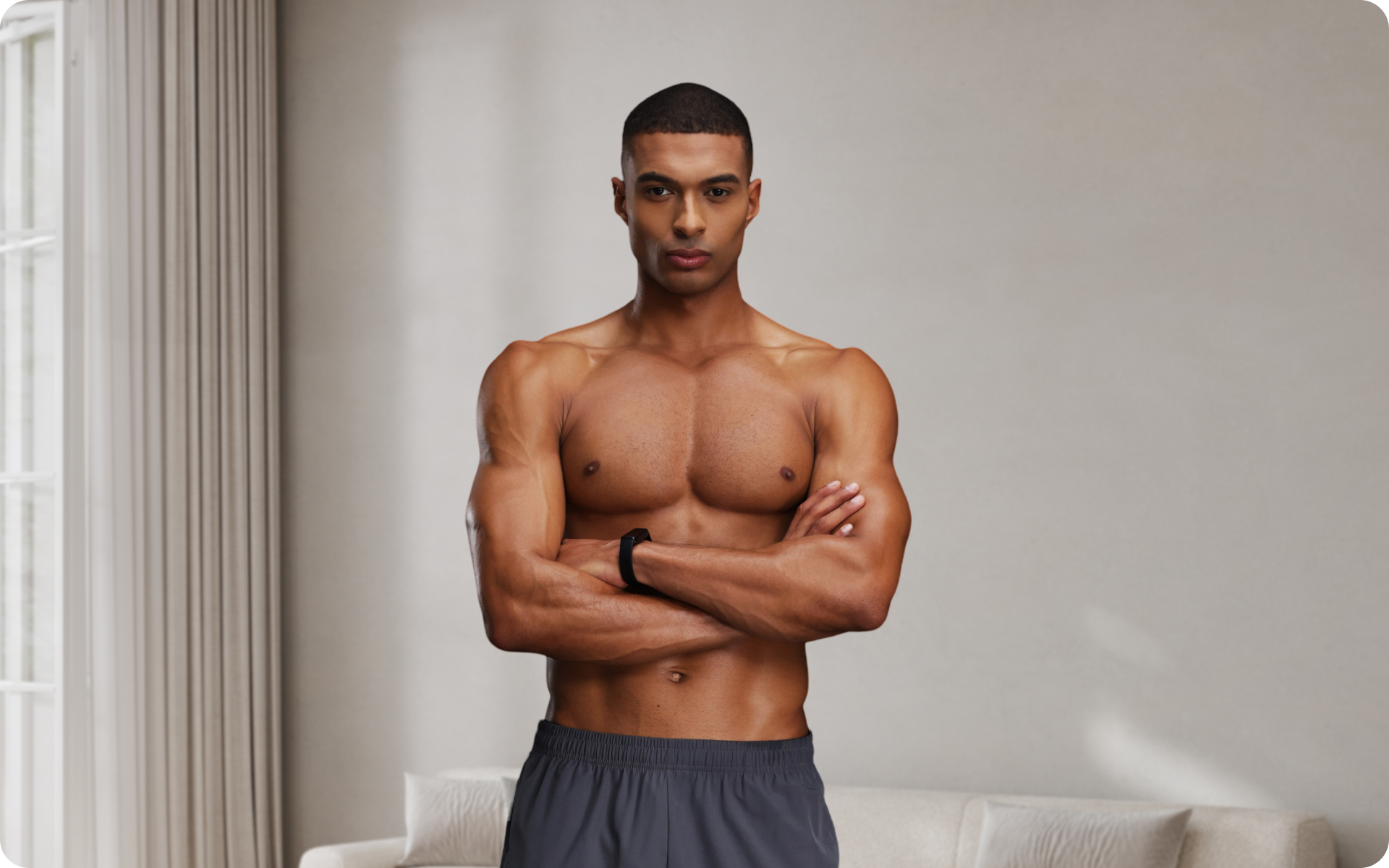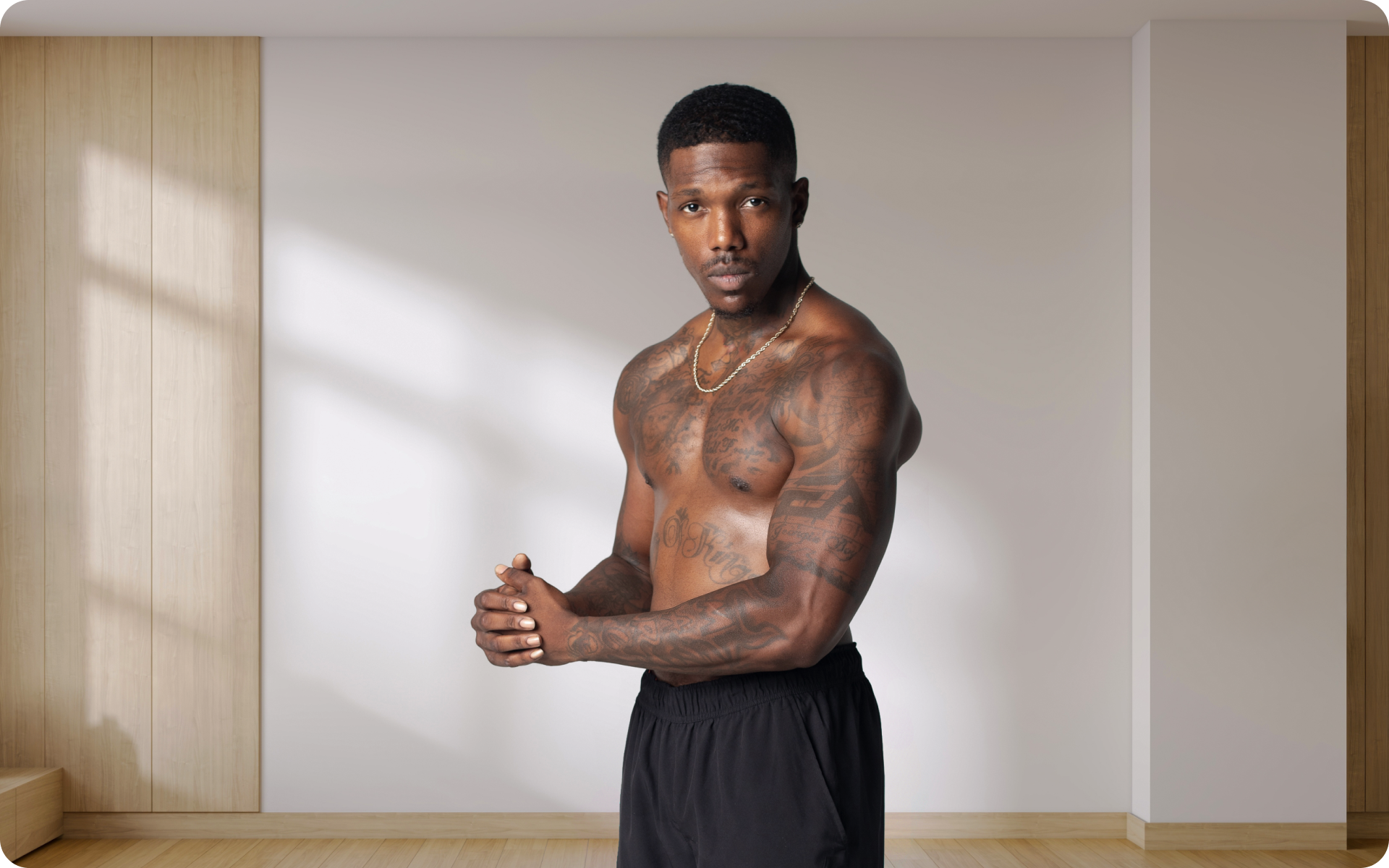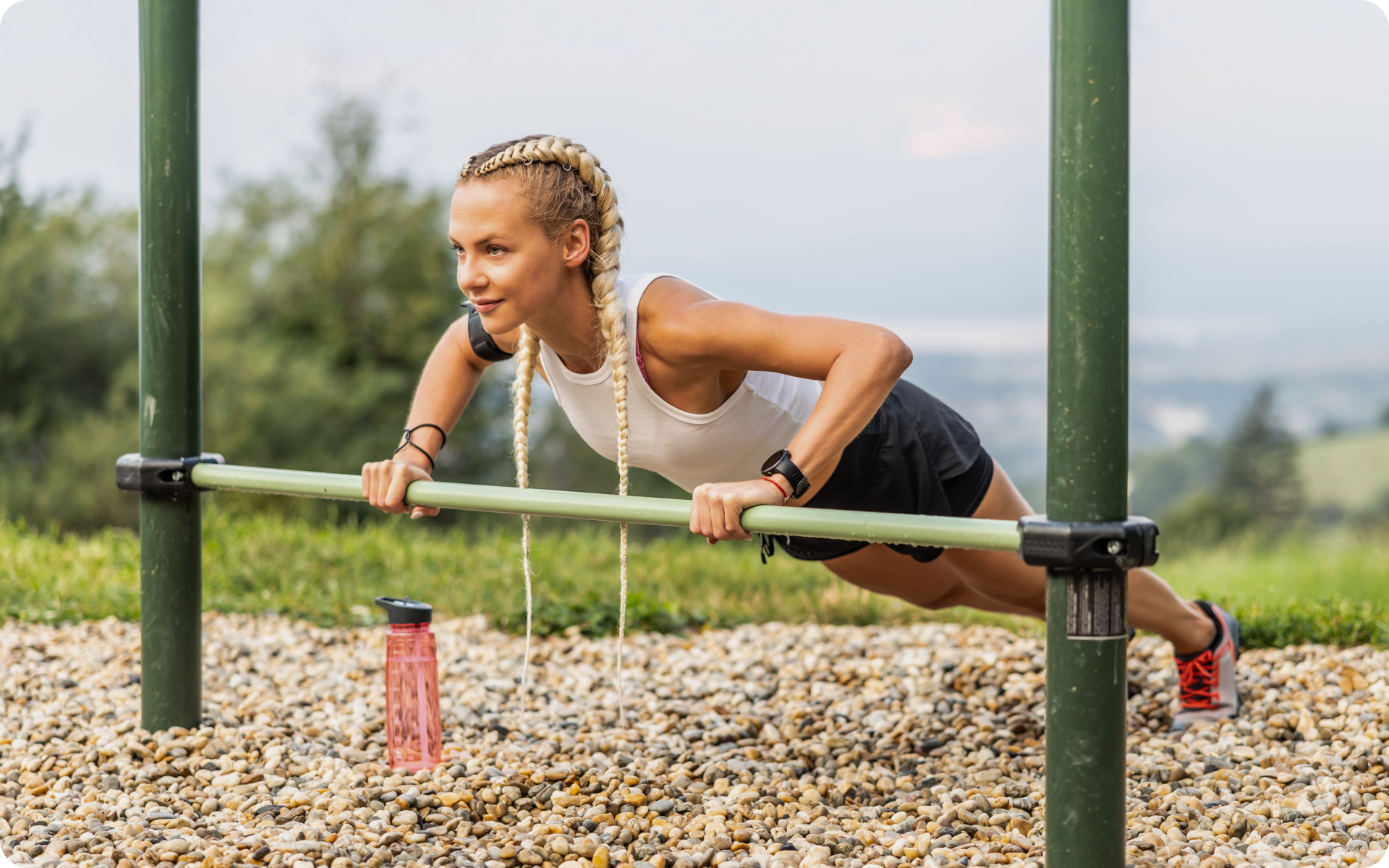You’ve heard a lot of good things about calisthenics, namely; you won’t need equipment, you can do it anywhere, and with the right skills – you won’t even need a trainer!
Sounds perfect, doesn’t it?
That said, you can’t help but wonder if it’s possible to build muscle with calisthenics, we’re talking real muscle that makes you lean and ripped. Can such a seemingly undemanding exercise push your body to its limits?
Well have I got news for you.
The right calisthenics workout to build muscle may be all you need to transform your body into a powerhouse of strength and endurance.
No, this isn’t just another fitness fad. It’s a tried and true method that has stood the test of time.
Intrigued? Let me break down the science behind the benefits of calisthenics, and how you can use it to achieve your dream physique.
Can Calisthenics Build Muscle Mass?
Yes, calisthenics can be as good a mass-building workout as weight lifting or bodyweight workouts (2).
But whether or not you see results, and how soon you see any results depends on three things – stimulus, recovery, and adaptation. And these aren’t just buzzwords, take it from me — they are the building blocks of an effective calisthenics muscle building workout.
Stimulus, in our context, is the workout itself. It’s when you challenge your muscles by doing push-ups, pull-ups, squats, and other bodyweight exercises. This ‘stress’ causes microscopic damage to the muscle fibers – necessary for muscle growth.
P/S – this stimulus must be consistent and intensive enough to induce muscle hypertrophy.
Recovery is when your body repairs these damaged muscle fibers through a cellular process where it fuses muscle fibers together to form new muscle protein strands or myofibrils. These repaired myofibrils increase in thickness and number to create muscle hypertrophy (growth) (4).
Adaptation is the body’s response to the stress it has been put under during the workout. After adequate repeated stimulus and recovery, your body adapts by building stronger and bigger muscles to handle the stress over time (4).
So, can calisthenics build muscle? Absolutely. A well-designed calisthenics workout plan that progressively overloads your muscles can stimulate muscle growth just like weight lifting. It’s all about applying the right amount of stress, allowing your body to recover, and consistently pushing your limits to force your body to adapt.
Remember, your body doesn’t know if you’re lifting weights at the gym or doing bodyweight exercises at a park. All it knows is that it needs to get stronger to survive the stress you’re putting it under.
Yanking yourself back in shape has never been so easy with our game-changing fitness app! Start transforming your life with BetterMe!
Can You Body Build With Just Calisthenics?
Yes, calisthenics alone is enough to body build and achieve a lean, toned physique. It’s a common misconception that you need heavy weights and fancy gym equipment to build muscle. The truth is, you can use the resistance of your own body weight through calisthenics exercises to build muscle effectively (2).
One of the key aspects of a muscle-building workout is progressive overload, which means gradually increasing the stress placed on your body during exercise (1). In weightlifting, this is typically done by adding more weight.
In calisthenics, you can achieve progressive overload by increasing the number of reps, decreasing rest time, modifying the exercise to make it harder, or a combination of these.
Calisthenics to gain muscle is not only possible but also advantageous in many ways. Below, I go over the benefits of using calisthenics exercises to build muscle:
You’re more likely to be consistent with calisthenics
Calisthenics requires no equipment and little space, meaning you can do it anywhere, anytime. This makes it much easier to stick with a consistent calisthenics workout than one that needs heavy weights or expensive machines.
You’ll get leaner
Weight lifting focuses on building muscle mass which can increase metabolism and in turn contribute to fat loss. Calisthenics, on the other hand, uses your own body weight as resistance and you can also increase the intensity of the workout by doing more reps or changing to harder exercises. This makes it a great exercise for burning fat and getting leaner at the same time.
It’s all about functional strength
Unlike some gym workouts that focus on one muscle group at a time, calisthenics engages multiple muscles all at once. It’s like a team effort, with all your muscles working together to make you stronger for day-to-day tasks (3).
Say hello to better flexibility and mobility
With calisthenics, you’re often moving your body through a full range of motion. This could not only make you more flexible but also improve your mobility (3). Talk about a win-win!
Body control and balance?
Count me in – mastering your own body weight? It’s a skill that comes with calisthenics and it’s not just for athletes. Better balance and coordination can make everyday activities a breeze!
It’s friendlier to your wallet
Ditch the expensive gym memberships and equipment. Calisthenics is a low-cost, high-reward way of building muscles, perfect for those watching their budget.
Your heart will thank you
Because they have an aerobic element, many calisthenics exercises get your heart pumping, promoting blood circulation and boosting your overall heart health.
Want a stronger core?
Calisthenics has got you covered – many calisthenics exercises need a tight core for stability, which can result in a stronger, more defined midsection, improved posture, and less back pain (5).
Your mental health will benefit too
Calisthenics can help you reduce stress, improve your mood, and keep you focused. It’s not just about physical strength, but mental well-being too (3).
It’s a sustainable choice
Let’s face it, we’re all getting older. But with calisthenics, you have a workout that can adapt with you as you age or face different physical conditions. It’s a lifelong fitness solution that’s always there when you need it.
Read more: Calisthenics Bicep Workout: 5 Ingenious Exercises With & Without Bars.
What Calisthenics Exercise Builds The Most Muscle?
Compound exercises are the best for building muscle. These are exercises that engage multiple muscle groups simultaneously, and it makes sense why they are so effective – you can lift more weight and challenge your body more.
I like to think of the fundamental movements in calisthenics as compound movements: push-ups, pull-ups, squats and dips are all excellent exercises for building muscle mass. These four exercises alone can form the basis of your entire workout routine if you’re looking to build muscle using calisthenics.
For a more advanced workout, add plyometric exercises such as jump squats and burpees to your routine.
Below, I’ll take you through the steps of my favorite mass building exercises that may work for any calisthenics routine:
Classic Push-Up (Target Muscle Group: Chest, Triceps, Shoulders)
The Classic Push-Up is a staple in any calisthenics exercises to build the chest. This exercise targets the chest, triceps, and shoulders, helping you develop upper body strength and size.
It’s an excellent calisthenics workout to build muscle because it engages multiple muscle groups simultaneously, leading to increased muscle activation and growth. Here’s how to do it:
- Start in a high plank position with your hands slightly wider than shoulder-width apart.
- Keep your body straight from head to heels.
- Lower your body until your chest almost touches the floor.
- Push yourself back up to the starting position.
- Keep your elbows close to your body throughout the movement.
- Engage your core muscles to maintain stability.
- Repeat for the desired number of reps.
Pike Push-Up (Target Muscle Group: Shoulders, Upper Back)
The Pike Push-Up is a calisthenics exercise that targets the shoulders and upper back. It’s a fantastic way to gain upper body strength without weights. This exercise is particularly beneficial for those interested in calisthenics to gain muscle as it mimics the overhead press, a popular weightlifting exercise. Follow these steps:
- Begin in a downward dog position with your hips high.
- Bend your elbows and lower your upper body until your head almost touches the floor.
- Push yourself back up to the starting position.
- Keep your core engaged and your hips high throughout the movement.
- Adjust your feet closer or further from your hands to modify the difficulty.
- Repeat for the desired number of reps.
Classic Pull-Up (Target Muscle Group: Back, Biceps)
The Classic Pull-Up is one of the best muscle building exercises in calisthenics. It targets your back and biceps, two large muscle groups, making it an effective part of a mass building workout. Here’s how:
- Start by grabbing a bar with an overhand grip, hands slightly wider than shoulder-width apart.
- Pull your body up until your chin is above the bar.
- Lower yourself back down in a controlled manner.
- Keep your core engaged throughout the exercise.
- Try not to swing or use momentum to pull yourself up.
- Repeat for the desired number of reps.
Pistol Squats (Target Muscle Group: Quads, Glutes, Hamstrings)
Pistol Squats are a powerful calisthenics exercise to build muscle in your lower body. They target the quads, glutes, and hamstrings, and also improve balance and mobility. Here’s how to do them:
- Stand on one leg with the other leg extended straight in front of you.
- Lower yourself into a squat while keeping the extended leg off the ground.
- Go as low as you can while maintaining balance.
- Push back up to the starting position.
- Repeat for the desired number of reps, then switch legs.
Glute Bridge (Target Muscle Group: Glutes, Hamstrings)
The Glute Bridge is another fantastic exercise for those following a calisthenics diet to build muscle. It targets the glutes and hamstrings, helping to build a strong and muscular lower body. Here’s how to execute it:
- Lie on your back with your knees bent and feet flat on the ground.
- Lift your hips off the ground by squeezing your glutes until your body forms a straight line from your shoulders to your knees.
- Hold this position for a few seconds.
- Lower your hips back down to the ground.
- Repeat for the desired number of reps.
BetterMe app will provide you with a host of fat-frying fitness routines that’ll scare the extra pounds away and turn your body into a masterpiece! Get your life moving in the right direction with BetterMe!
Is Building Muscle With Calisthenics Hard?
Building muscle with calisthenics is not inherently hard, but it does require a different approach compared to traditional weightlifting. The difficulty might depend on your fitness level, your familiarity with bodyweight exercises, and your dedication to consistent training.
Calisthenics exercises use your own body weight as resistance, which can be an effective way to build muscle. However, to make significant progress, you need to understand the principles of progressive overload, which involves gradually increasing the stress placed on your body during exercise.
In calisthenics this can be achieved by increasing the number of repetitions, reducing rest time, or modifying the exercise to make it more challenging.
Another factor that could make building muscle with calisthenics seem hard is the type of physique you’re aiming for. If your goal is a bodybuilder-type physique with extremely large muscles, calisthenics might not be the most efficient way to achieve that. This form of training tends to build a lean, athletic physique rather than massive bulk.
Also, while calisthenics is excellent for building upper body and core strength, developing the lower body might be more challenging, compared to traditional weightlifting. That said, there are still effective calisthenics exercises for the lower body, such as pistol squats and glute bridges.
In terms of risk of injury, calisthenics can be safer than weightlifting if done correctly. That’s why our guide on how to relax back muscles emphasizes correct form.
It’s important to start with exercises that match your current fitness level and gradually increase the intensity as your strength and endurance improve.
Finally, consistency is an aspect that one may struggle with. To build muscle with calisthenics, you need to stick with your workout plan and also ensure you’re consuming a nutrient-rich diet to support muscle growth and recovery.
So, while building muscle with calisthenics may present its own unique challenges, it’s definitely possible and not necessarily harder than other forms of training. With the right approach and commitment, you can achieve significant muscle growth and numerous other fitness benefits from calisthenics.
Read more: Plyometrics Vs Calisthenics: Which One Should Beginners Do?
Frequently Asked Questions
How Long Does It Take to Build Muscle with Calisthenics?
How long does it take to build muscle? On average, noticeable muscle growth and strength improvements can typically be seen after about 4-6 weeks of consistent, high-intensity calisthenics training.
However, exactly how much time it takes to build muscle with calisthenics varies greatly depending on several factors including your starting fitness level, genetic factors, consistency, and the intensity of your workouts.
Is Calisthenics Easier Than Bodybuilding?
Whether or not calisthenics is easier than bodybuilding depends largely on one’s perspective and fitness goals. Bodybuilding typically involves lifting heavy weights in a gym setting and focuses on isolating specific muscle groups for hypertrophy (muscle growth).
Calisthenics, on the other hand, primarily uses bodyweight exercises that often engage multiple muscle groups at once and can be done nearly anywhere. Some may find calisthenics easier because it doesn’t require gym equipment and tends to promote a more balanced and functional physique.
However, others might find bodybuilding easier because weight progression is more straightforward, and it can be easier to target specific muscles.
Is Calisthenics Easy for Bodybuilders?
They may have an advantage when starting calisthenics, due to their existing muscle strength and knowledge of exercise form and technique. However, calisthenics also requires a good deal of flexibility, balance, and core strength, which are not always the primary focus in bodybuilding.
Therefore, while bodybuilders might find some aspects of calisthenics easier due to their strength, they may also face challenges, especially with exercises that require a high level of body control and coordination. But with consistent practice, bodybuilders can certainly excel in calisthenics.
The Bottom Line
So – does calisthenics work for muscle building? Yes indeed! Calisthenics can be used to effectively build muscle mass, with the right approach. With compound exercises, increasing intensity and progressive overload, your body can adapt by building muscle mass. Calisthenics also has additional benefits like improved flexibility, balance, and mental well-being. All in all, it is a great choice for most anyone looking to get stronger or build muscle.
DISCLAIMER:
This article is intended for general informational purposes only and does not serve to address individual circumstances. It is not a substitute for professional advice or help and should not be relied on for making any kind of decision-making. Any action taken as a direct or indirect result of the information in this article is entirely at your own risk and is your sole responsibility.
BetterMe, its content staff, and its medical advisors accept no responsibility for inaccuracies, errors, misstatements, inconsistencies, or omissions and specifically disclaim any liability, loss or risk, personal, professional or otherwise, which may be incurred as a consequence, directly or indirectly, of the use and/or application of any content.
You should always seek the advice of your physician or other qualified health provider with any questions you may have regarding a medical condition or your specific situation. Never disregard professional medical advice or delay seeking it because of BetterMe content. If you suspect or think you may have a medical emergency, call your doctor.
SOURCES:
- Progression of volume load and muscular adaptation during resistance exercise (2014,nih.gov)
- Resistance training – health benefits (2022,betterhealth.vic.gov.au)
- The advantages of body-weight exercise (2022,health.harvard.edu)
- The mechanisms of muscle hypertrophy and their application to resistance training (2010,nih.gov)
- The real-world benefits of strengthening your core (2012,harvard.edu)
